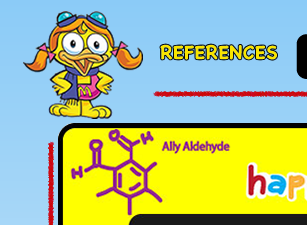Reference
The article described below refers to the general approach used by the researchers in their synthesis of Ingenol. It is important to note that the paper was not used as the basis for our particular mechanistic step but rather was a building block for the paper was whole.
![]()
The paper was primarily used to validate the approach of the authors on their synthesis of Ingenol. Though the procedure as a whole is fourteen steps, the authors have divided the steps into two separate phases. They denoted steps 1-7 as the cyclase phase and steps 8-14 as the oxidase phase. Over the course of the first seven steps of the reaction the researchers created two new rings (seven-membered and five-membered); this intermediate was noted to have a tigliane framework. In the latter part of the reaction the researchers selectively oxidized this carbon framework to produce ingenol. It is this two phase approach that is modeled off of the cited paper.
In the cited paper, the researchers used a similar approach. In the paper, the goal of the researchers was to synthesize a eudasemane terpene, and found that a two-phase approach was most effective. They even note in their paper that their “work establishes an intellectual framework in which to conceive the laboratory synthesis of other complex terpenes using a ‘two-phase’ approach.” In their particular synthesis they also used a cyclase and oxidase phase. In their cyclase phase (9 steps) they created a 10 carbon skeleton consisting of two six membered rings. In their oxidase phase (4 steps) they selectively oxidized the skeleton to create their product.
Note in the scheme below the similarities between the two approaches. The first phase consists of cyclization, and the second of oxidation.
The following articles cited the same article as our paper:
![]()
In this paper the researchers described the oxidative hydroxylation of C-H bond using a non-metallic catalyst. They cite the same paper in Nature not necessarily as a basis for their own experiment but rather as another example of selective C-H hydroxylation. They are referring here to the oxidase phase of the cited paper. Stereoselective oxidation of C-H bonds seems to be a growing field of research and this paper was interesting in that its choice of catalyst was non-metallic.
![]()
The focus of this paper was to probe the reason behind the difference in reactivity between methyl hydrogen benzylphosphonates and dimethyl benzylphosphonates. The researchers carried out density functional theory calculations on Pd-catalyzed phosphoryl-directed ortho-olefination. The catalytic cycle consists of four steps: C-H bond activation, transmetalation, reductive elimination, and recycling of catalyst. The reference toward the source citation in this paper is to showcase a successful application of C-H functionalization strategies in natural product synthesis, such as the eudesmane terpenes that were obtained from site-selective C-H oxidation from the source citation.
![]()
The research discussed in this article is focused on developing ways of divergent synthesis of terpenoids, compounds that have antiviral properties towards herpes and polio. In part of their synthesis, the authors draw upon Dr. Baran’s research about two-phase biosynthesis of terpenes. Using an organocopper according to Baran’s discoveries about transition-metal catalysts, the authors were able to first build a carbon framework, then oxidize C=C and C-H and enantioselectivity place a methyl group on the compound.




